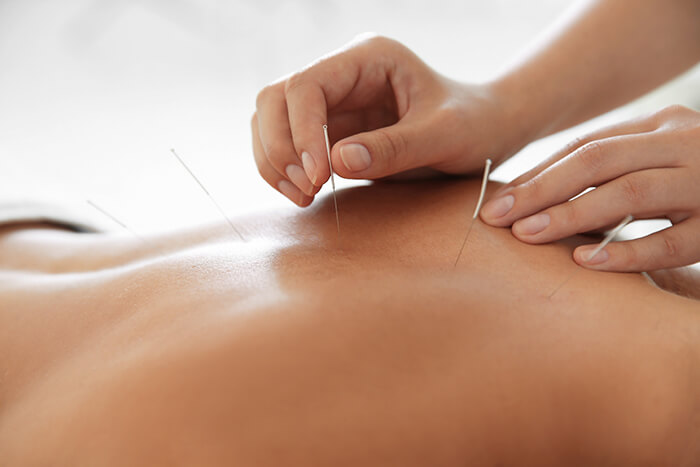Did you know many of the Courtyard Clinic therapists are also trained to use acupuncture as part of your treatment?
Recently some of the Physiotherapists undertook an update training on the use of acupuncture for trigger points taught by John Hobbs, who is the Chairman of The Acupuncture Association of Chartered Physiotherapist (AACP). Below is a summary of questions and answers regarding acupuncture for your information based on a publication leaflet from the AACP.
What is acupuncture?
It is the insertion of fine stainless steel needles into the skin, it has been used in China for over 2,000 years and now used in Western medicine with an ever increasing body of research and evidence to support its effectiveness. Acupuncture can be used to assist in pain relief for a number of musculoskeletal conditions, for example in tension- type headaches, neck pain, low back pain, tennis elbow, achilles tendinitis, osteoarthritis.
How does acupuncture work?
Acupuncture stimulates the body to release endorphins and oxytocin, which are the bodies pain and stress-relieving chemicals. It may also release melatonin which can help sleep and the release of serotonin which can encourage a sense of well-being. Acupuncture also stimulates nerve fibres which can block out pain signals and reduce sensitivity of tender points.
What would happen if I would like my therapist to use acupuncture?
They will explain the treatment and check through a consent form to make sure it is appropriate for you, as there are some medical conditions that are not suitable for acupuncture, for example if you have any infections, if you have a bleeding disorder such as haemophilia, if you suffer with epilepsy, along with some other conditions. If it is appropriate to use acupuncture and you have eaten within the 2 hours before to reduce the risk of feeling faint, your therapist will position you comfortably and then insert the needles required. They may use between 1 and 10 needles either in the area where you have the pain or sites away from the pain, or a combination of both. The needles maybe in for just a few minutes, or up to 30 minutes and your therapist may stimulate them by gently rotating them.
How many sessions are required?
This can vary depending on the condition and the client’s response, sometimes one or two session are all that is needed but typically a course of 6-10 sessions are used with occasional follow-up sessions, depending on the condition being treated.
How long does it take to feel an improvement?
This varies, sometimes people feel an immediate benefit and can move and stretch better after the needles are removed, some people see a gradual improvement. Others see no improvement at all. Occasionally people find their symptoms flare up for 24 hours but then have a marked improvement.
Does acupuncture hurt?
Acupuncture should not be painful, when the needles are inserted you may feel a brief, sharp pricking and then during the treatment sometimes a feeling of ache, if a needle is particularly uncomfortable your therapist will remove it.
Is acupuncture safe?
Acupuncture is safe if administered by a competent registered practitioner, the needles used are individually packaged, single use and sterile.
Are there any side effects to acupuncture?
Most side effects are mild and can include a small amount of bleeding or bruising, mild pain aggravation of symptoms, drowsiness or nausea.
Acupuncture can be used within your physiotherapy or chiropractic treatment plan to assist in pain relief alongside manual therapy techniques, strengthening or stretching exercises and advice regarding posture.
If you would like more information you can look at the AACP website found at aacp.org.uk. Alternatively you can ask your therapist or our Courtyard receptionists, who will book you in with someone who can offer you acupuncture as part of your therapy.
Helen Cann, MCSP, AACP member

